
Edwin Herbert Land, ForMemRS, FRPS, Hon.MRI was an American scientist and inventor, best known as the co-founder of the Polaroid Corporation. He invented inexpensive filters for polarizing light, a practical system of in-camera instant photography, and the retinex theory of color vision, among other things. His Polaroid instant camera went on sale in late 1948 and made it possible for a picture to be taken and developed in 60 seconds or less.
Optica is a professional association of individuals and companies with an interest in optics and photonics. It publishes journals, and organizes conferences and exhibitions. In 2019 it had about 22,000 members in more than 100 countries, including some 300 companies.

Arthur Leonard Schawlow was an American physicist and co-inventor of the laser with Charles Townes. His central insight, which Townes overlooked, was the use of two mirrors as the resonant cavity to take maser action from microwaves to visible wavelengths. He shared the 1981 Nobel Prize in Physics with Nicolaas Bloembergen and Kai Siegbahn for his work using lasers to determine atomic energy levels with great precision.
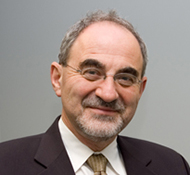
Eli Yablonovitch is an American physicist and engineer who, along with Sajeev John founded the field of photonic crystals in 1987. He and his team were the first to create a 3-dimensional structure that exhibited a full photonic bandgap, which has been named Yablonovite. In addition to pioneering photonic crystals, he was the first to recognize that a strained quantum-well laser has a significantly reduced threshold current compared to its unstrained counterpart. This is now employed in the majority of semiconductor lasers fabricated throughout the world. His seminal paper reporting inhibited spontaneous emission in photonic crystals is among the most highly cited papers in physics and engineering.
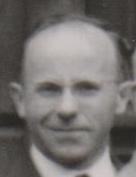
Robert Gaston André Maréchal was a French researcher and administrator in optics.

Theodor Wolfgang Hänsch is a German physicist. He received one fourth of the 2005 Nobel Prize in Physics for "contributions to the development of laser-based precision spectroscopy, including the optical frequency comb technique", sharing the prize with John L. Hall and Roy J. Glauber.
Walter Lewis Hyde (1919-2003) was an American physicist, an early contributor to the field of fiber optics. He held patents for devices used in ophthalmology, as well as a panoramic rear-view mirror for automobiles.

Gary Keith Starkweather was an American engineer and inventor most notable for the invention of the laser printer and color management.
Robert Earl Hopkins was president of the Optical Society of America in 1973.
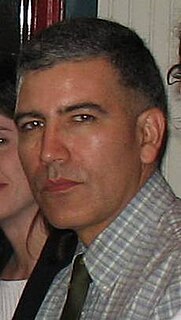
Francisco Javier "Frank" Duarte is a laser physicist and author/editor of several books on tunable lasers.
Seibert Quimby Duntley was born in Bushnell, Illinois on October 2, 1911. He received an SB in physics from Massachusetts Institute of Technology in 1933. Duntley received an MS degree from California Institute of Technology in 1935 and an Sc.D. in physics from MIT in 1939. While at MIT, Duntley met and worked with Karl Taylor Compton, Harold Eugene Edgerton, and many other prominent physicists. Duntley's primary interest was in applied physics particularly the optics of turbid media.

Loyd Ancile Jones was an American scientist who worked for Eastman Kodak Company, where he was head of its physics department for many years. During World War I, he was also a major contributor to the development of naval camouflage.
Joseph W. Goodman is an engineer and physicist. He received an A.B. degree in Engineering and Applied Physics from Harvard University in 1958 and M.S. and Ph.D. degrees in Electrical Engineering from Stanford University in 1960 and 1963, respectively. He has held a number of positions in the field of optics, including the presidency of the Optical Society of America in 1992.
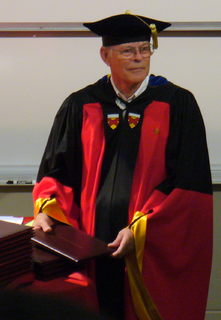
Robert Louis Byer is a physicist. He was president of the Optical Society of America in 1994 and of the American Physical Society in 2012.
Duncan T. Moore was president of the Optical Society of America in 1996 and was awarded the society's Edwin H. Land Medal in 2009.
Warren J. Smith (1922-2008) was president of the Optical Society of America in 1980.
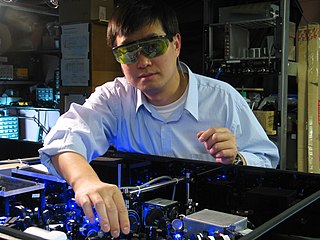
Jun Ye is a Chinese-American physicist at JILA, National Institute of Standards and Technology, and the University of Colorado Boulder, working primarily in the field of atomic, molecular and optical physics.

Pablo Artal is a Spanish physicist and full professor specialized in optics at the University of Murcia, as well as in the development and application of new techniques in human vision research. He received the Rey Jaime I Award for New Technologies in 2015. His main research topics are the optics of the eye and the retina and the development of optical and electronic imaging techniques in the field of biomedicine, ophtalmology and vision. He has contributed to the advance of methods for the study of the optics of the eye and contributed to the understanding of the factors that limit the resolution of the human vision. Moreover, his discoveries and ideas have been applied to instruments and devices used in the clinical practice of ophthalmology.
The Edwin H. Land Medal is jointly presented by The Optical Society and the Society for Imaging Science and Technology (IS&T). The Land Medal was established in 1992 to honor the noted scientist and entrepreneur Edwin H. Land, who is noted for his invention of instant photography, for founding the Polaroid Corporation, and for developing the theory of Retinex, amongst many other accomplishments. It is funded by the Polaroid Foundation, the Polaroid Retirees Association and by individual contributors Manfred Heiting, Theodore Voss and John J. McCann. The medal honors individuals who, using the science of optics, "have demonstrated pioneering enterpreneurial activity that has had a major impact on the public."











